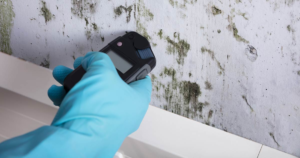Solar energy captures the sun’s rays and converts it into clean electricity for your home or business. Solar panels are comprised of semiconductor devices known as solar cells. These are surrounded by a back sheet made of extra-durable plastic and metals, as well as a thin sheet of glass. Metal connectors are then soldered to the solar cells. For professional help, contact Solar Companies Utah.

Grid-tied systems connect directly to the power grid through a two-way meter, providing financial payback while delivering sustainable energy to the utility company. They work without the need for a battery backup and are currently the most common solar system type worldwide. They use an inverter to convert Direct Current (DC) into Alternating Current (AC), which is then fed into the electrical grid. When your home uses more energy than it produces, the power goes back to the grid, and the utility credits you for the excess. This is the most efficient type of solar system, and it can save you money on electricity costs in the long run.
The best part about a grid-tied solar system is that it doesn’t require batteries or a generator. During the day, your solar panels produce more energy than you need, and the power grid will supply your home with enough electricity for all of your needs at night. This eliminates the need for expensive batteries and makes grid-tied solar systems a great choice for homeowners. In addition, most homeowners can qualify for net metering programs, which allow you to offset electricity charges with solar energy produced by your home.
This type of system maximizes solar energy utilization, and it reduces reliance on fossil fuels, which is good for the environment. Plus, solar power doesn’t require water to operate, which is a huge benefit in regions where water is scarce.
A grid-tied system is also easy to install and maintain. It’s simpler and more cost-effective than off-grid solar systems, which can require a substantial initial investment. Additionally, the equipment required for a grid-tied system is cheaper and more familiar to electricians, making installation a much simpler process.
If you decide to go with a grid-tied solar system, it’s important to keep in mind that it will shut down if the power goes out. This is because Underwriters Laboratories requires that solar systems are shutdown during power outages to protect the safety of utility workers. If you want to ensure that your solar system will stay active during a power outage, you can add battery backup to your system or opt for an off-grid system.
They’re more efficient in cold weather
Many people are wondering whether or not solar panels work in the winter. After all, the sun is less frequent in the winter and the days are shorter. This means that the energy produced by a solar panel will be lower than on a warm summer day. However, this is not because the solar panel is working less efficiently, but because there are fewer hours of peak sunlight.
It may surprise you to learn that solar panels actually perform better in the cold. The reason is that they are at their most efficient at lower temperatures. This is because solar panels convert sunlight into electricity using photovoltaic cells, which are activated by light rather than heat. When the cells are at their lowest temperature, they can produce more voltage and thus more electricity. As the temperature rises, the cells lose their efficiency.
In addition, the surfaces of solar panels are designed to be reflective, which helps them capture more of the sun’s light in the winter. This can lead to even higher levels of power production on sunny days.
However, if too much snow is on the surface of the solar panels, it can interfere with their performance. That’s why it’s important to regularly clear the snow off of your solar panels with a broom or a scraper. Be careful not to use a power washer, as this can damage the surface of the panels.
If you’re worried that going solar isn’t a good fit for your home, don’t be. Solar is a great way to make your home more environmentally friendly and save money on your utility bills. It’s also a great option for those living in states with colder climates, like New England. If you have questions about the best solar solution for your home, contact a professional. They can help you find the right system and get started saving on your energy costs today!
They’re durable
Solar panels are made from a variety of materials, including silicon and aluminum. They’re built to withstand high winds, rain, and ice. Most manufacturers put their panels through rigorous testing to ensure they can stand up to the harshest weather conditions. SolarWorld, for example, tests its panels with pouring rain, hail, sleet, snow, baseballs, and heavy weights. The results are impressive!
Most solar panels are highly durable, and many will last for 25-30 years. Even after this point, they can continue to generate electricity, but at a lower efficiency. However, excessive exposure to sunlight can degrade their performance, so it’s important to find a shaded location for your solar system.
Unlike fossil fuels, solar energy produces clean power with no harmful emissions or waste products. This makes it an environmentally friendly source of energy that can help to reduce the carbon footprint of businesses. Additionally, solar panels are a great way to save on energy costs and make your business more profitable.
A solar panel consists of silicon solar cells, a metal frame, and wiring elements. They’re then encased in a glass sheet and an insulative layer to protect them from excess heat. Most solar panels use monocrystalline silicon cells, which consist of one solid silicone crystal. They’re more efficient than polycrystalline silicon, but they also cost more.
There’s no shortage of the materials used to build solar panels, as both silicon and aluminum are abundant on Earth. The glass that covers the cells is tempered, which makes it very durable and able to withstand hail impacts. The glass is also incredibly clear to maximize sunlight absorption.
The aluminum frames and junction boxes of a solar panel are also very durable, making them an excellent choice for residential and commercial buildings. Moreover, they’re easy to install on roofs and other structures.
Another benefit of solar panels is that they’re reusable and recyclable, reducing the need for mining fresh raw materials. They can also help to decrease reliance on traditional fuels, which are known to cause environmental damage. In addition, they can be used for energy storage.
They’re easy to install
Solar panels are an easy way to save money on electricity. They require very little maintenance and are an excellent way to reduce your carbon footprint. However, it’s important to know how to install them correctly. If you’re thinking about going solar, consult a local installer to make sure the process is done right and you don’t miss out on any rebates or tax credits. The installer can also help you decide if your region is well-suited for solar energy. Some regions have strict regulations for solar panel installation, and you may need to get a permit.
The main components of a solar system are silicon solar cells, a metal frame and wiring elements. A glass cover protects the panel from excessive heat and humidity. An insulative layer and a back sheet prevent corrosion. The cells are placed in a metal frame with latches that fasten to mounting clamps on the roof. The clamps are usually screwed to rafters in the roof’s structure. In addition, a specialized type of mount can tilt the panels for optimal sunlight exposure.
To produce power, the p-type or n-type silicon solar cell mixes crystalline silicon with gallium or boron and adds phosphorus to make it electrically conductive. Then the silicon ingot is cut into thin sheets. Narrow slits are then cut into each individual cell to funnel sunlight to the conductive silicon. The slits are coated with an anti-reflective material to increase the solar panel’s efficiency. A backsheet made of extra-durable plastic or metal is then installed to keep the cells from overheating. Metal connectors (also called bus wires) connect the silicon solar cells in parallel.
Once completed, a solar panel is tested under Standard Test Conditions to ensure that it meets its projected outputs and efficiencies. If the panel passes this test, it’s ready to be shipped and installed on a rooftop.
There are two types of solar PV mounting systems: pole and roof-ground mounts. The latter are more common and provide more flexibility. They can be positioned to face the sun in winter or summer and can be adjusted to match the solar radiation pattern of your location. They are also able to withstand high wind speeds.



